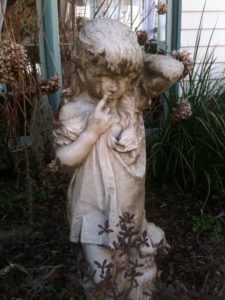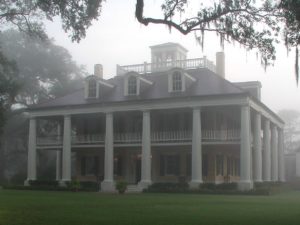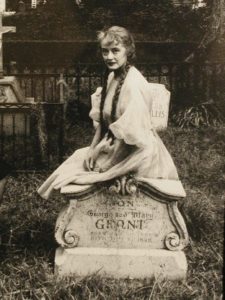It’s relatively easy to fake the presence of ghostly phenomena: flashes of light (often referred to as orbs), static on digital voice recorders (subject to human interpretation), and the wonders of Photoshop.
The haunted status of Houmas House in Burnside, Louisiana is perplexing to owner Kevin Kelly. According to both visitors and staff, adult spirits abound. A nineteenth-century river boat captain paces back and forth on the Widow’s Walk atop the roof of this antebellum beauty. A second male figure strolls the grounds. “There is a tall, tall black man,” states Houmas House historian Jim Blanchard. “When I first saw him . . . he went behind me . . . and through the wall.” Blanchard believed the ghost knew exactly where he was going. “We were redoing one of the cottages on the grounds, opening up paneled walls that had been added on, and discovered a doorway that had been covered up. The ghost was walking through a doorway that was original to the cottage.” Owner Kevin Kelly agrees that this particular ghost sticks to familiar paths, ignoring contemporary obstacles. “I put a big circular fountain right behind the house. People tell me he walks right through the fountain but doesn’t get wet.”
Kelly freely admits he has never seen any of the ghosts of Houmas House but wishes that if he could arrange for a ghost to put in an appearance his vote is for movie star legend Bette Davis.” Kelly explains: “In 1963, Miss Davis arrived at Houmas House to film scenes for Hush . . . Hush Sweet Charlotte. People want to see where Betty Davis stayed here at Houmas House. “She is our number one draw.” Kelly wistfully adds, “If I could get the world to believe her ghost was on this property, I’d get millions of people here a day.”

Visitors to the circa 1796 Mrytles Plantation on the National Register of Historic Places can choose either the History or Mystery tour. During the latter, tour guides regale the curious with a laundry list of spooky activities: handprints inside mirrors, footsteps crashing up and down the main staircase, sweet perfume and pungent cigar odors, cold spots, photos of a transparent female figure lurking in the alleyway between the buildings and silhouettes of children who may have been poisoned kneeling on the roof. The plantation also operates as a bed and breakfast and potential guests continue to pose the million-dollar question: “Which room is the most haunted?”
Haunted tales at historic sites do equate to an increase in revenue.

Yet Maida Owens, former director of Louisiana’s Folklife Program, insists a distinction be made between folklore and “fakelore.” “I see nothing wrong with haunted history tours or ghost tours and when combined with good theatre or storytelling they can make exceptional presentations that reflect an area’s culture. Folklore,” says Owens, “are the traditions that have been passed down in a community over time. Fakelore is an obvious commercial embellishment of the past.” Owens adds that fakelore shouldn’t be foisted on a gullible public without some type of warning. “It’s about truth in advertising more than anything else.”
So when visiting a reputed haunted site or trailing along on a local ghost tour, what is the truth? Perhaps we need to look to ourselves. Are we there to be entertained? As we stroll through the bedroom were Bette Davis slept during filming at Houmas House should we be rewarded with the sight of “Bette Davis eyes” peering back at us? The lyrics of the song certainly are apropos: “She’ll tease you, she’ll unease you. All the better just to please you.”
The choice is yours: suspend skepticism and embrace the moment or walk away confident that you haven’t succumbed to fakelore no matter how well told.



